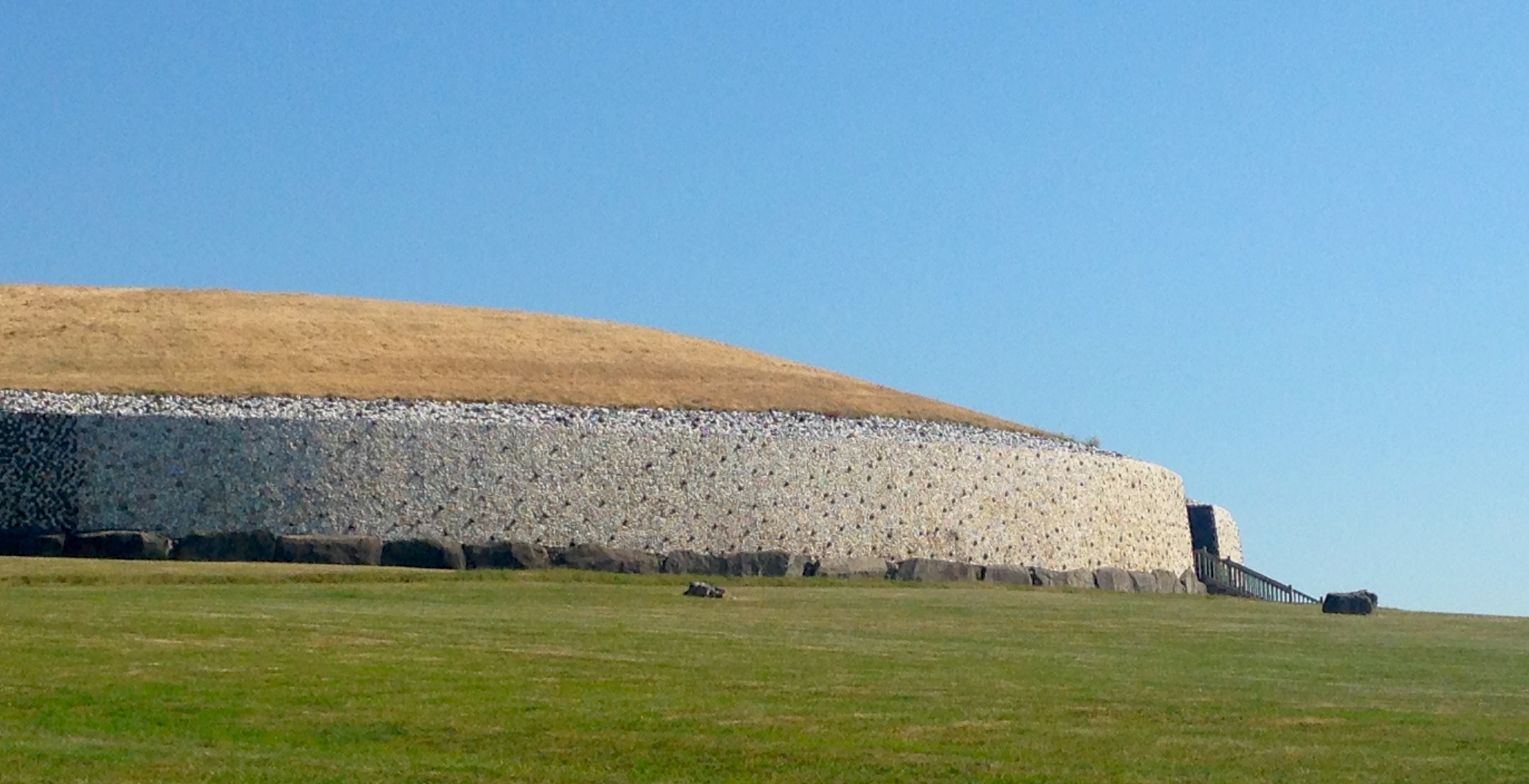Transmitters
The entrance to Newgrange, Ireland
I have always wanted to go to Newgrange. Perhaps more so than Stonehenge. It is the one of the oldest solstice aligned temples in the world, constructed 5,200 years ago. Its circular grooved carvings are so distinctive that the peoples who made them have been given the name Grooved Ware people.
Newgrange and the lesser known satellite site of Knowth, like Stonehenge, used imported stones. Stonehenge bluestones came from the Preseli hills in Wales and the quartz stones which are so unique in the construction of Newgrange and Knowth, came from County Wicklow, over 100 kms away. Both these sets of stones were specifically chosen for their qualities not just decoration.
I was surprised to see this startlingly white quartz façade at Newgrange. All the pictures I had seen are like the one I took, showing the grooved stone rock at the entrance. But this semi circular façade of white quartz stands out as a little strange and modern. It was indeed a later addition reconstructed by Professor Michael J. O’Kelly, who led the 1962-1975 excavations. using quartz stones found scattered around the original dome shaped monument.The quartz stones at Knowth are still in rubble piles around its base.
Nwgrange showing quartz and granite rock facade reconstruction.
Why am I suddenly so interested in these quartz stones? Resonance!!! Quartz rocks are the source of quartz crystals, a piezoelectric material used to create an electrical signal most commonly used in watches, computers and radio transmitters. Is this why was quartz transported from over 100 kilometres away to be part of the structures at Newgrange and Knowth?
When I was a child we had two huge radio sets with crystal electrodes in them which used to “warm up” when you turned them on and waited for the magical voices to come through the gauze speakers. Children (read boys!) were given home science kits where you could grow your own crystals and make a simple crystal radio transmitter. They are the original frequency transmitters and were used long before computers.
Stonehenge is situated on the Salisbury Plain which is geologically formed by calcareous sediments, or chalk. This outcrop of chalk stretches right across Wiltshire, Hampshire and Sussex . The feature of this chalk is the blocks of quartz sandstone, known as sarsens, the building blocks of Stonehenge and Avebury. Both Stonehenge and Newbury are solstice alignment sites.
Newgrange is famous for a unique occurrence on the winter solstice. In his excavations, Professor O’Kelly discovered a unique roof box designed to admit the first rays of sun to penetrate to the back of the cavern on the 21st December, the winter solstice. Standing inside the darkened chamber for a solstice simulation, was like being witness to a celestial transmission. The shaft of light shines through the roof along the passage, gradually strengthens in intensity, peaking then fading. The whole light “transmission” lasts for approximately for 17 minutes every year. Of course this depends on it not being a cloudy day.
The more I see of Neolithic structures, the more I come to draw my own conclusions. These were not designed as tombs, they had more sophisticated purposes. The geometric spirals and circles carved into the rocks at Newgrange are the best preserved of all the inscriptions on standing stones, because Newgrange was buried under earth for thousands of years. These circles, herringbones, triangles and indents are a language, seemingly familiar but as yet uninterpreted. Like the pyramids, we need a Rosetta Stone for translation.
This then poses the question was Newgrange a transmitter? Was quartz used to amplify this transmission so that every year on the winter solstice, light would emit a resonant frequency which could be received somewhere in the celestial heavens? It is not so far fetched.
Then to put two seemingly disparate events together – what if the crop circles which mostly occur on the quartz rich chalk fields of Wiltshire and Sussex are modern day transmissions back to us, couched in a geometric language we have yet to interpret. Things that make you go hmmmmm……..
Grooved inscriptions on the entrance rock at Knowth, Ireland showing quartz and round granite rubble at its base.






